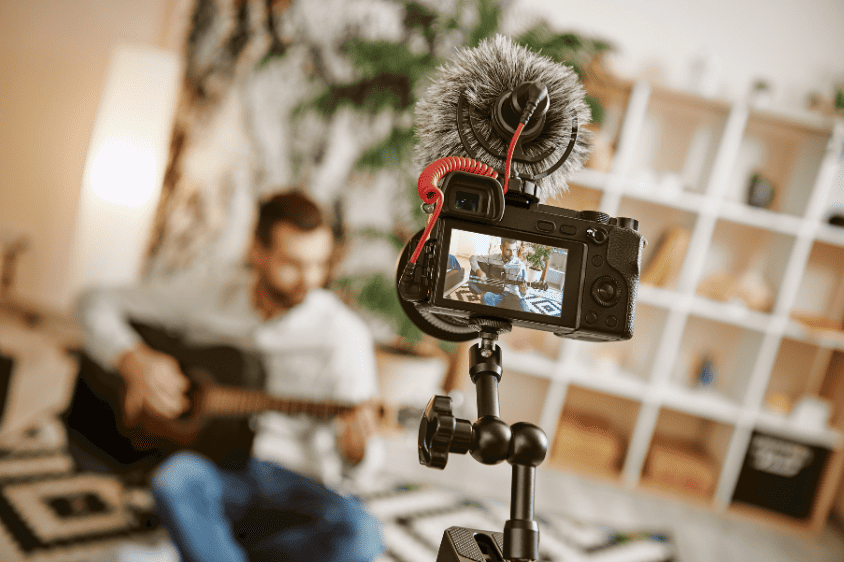
If you’re reading this, you’re likely no stranger to the thrilling world of online content creation.
It’s a place where trends shift like sand dunes in the desert, and staying ahead of the curve is key to success.
In 2024, two giants continue to dominate the scene: Blogging vs YouTube.
Both offer promising avenues for profit, but which one reigns supreme?
In this article, we’ll dive deep into the lucrative realm of content creation and compare the profitability of blogging vs YouTube in 2024.
Benefits And Drawbacks Of Blogging
When it comes to content creation, blogging has its fair share of benefits and drawbacks.
As someone who has experienced the world of blogging, I can tell you that one of the biggest advantages is the ability to express your thoughts and ideas extensively.
Additionally, blogging can drive traffic to your website, boost your brand’s visibility, and establish you as an authority in your niche.
One of the main challenges of blogging is the time and effort it requires to consistently produce high-quality content.
It takes dedication and discipline to brainstorm ideas, conduct research, write engaging articles, and optimize them for search engines.
Moreover, building a loyal readership can be a slow process, and it may take time before you see noticeable results.
Overall, blogging has tremendous potential and can be a valuable asset for content creators.
Just be prepared to put in the necessary time and effort for long-term success.
Advantages and limitations of YouTube

When comparing content creation options, YouTube offers unique advantages and limitations.
As someone who has navigated the realm of video creation on this platform, I can attest to its power as a visual medium.
YouTube allows you to showcase your personality, visually engage with your audience, and create memorable content experiences that resonate with viewers.
One significant advantage of YouTube: With billions of monthly active users, the platform offers the potential for your content to go viral, attracting a wide audience and expanding your brand’s visibility.
Additionally, YouTube provides a built-in monetization program, allowing content creators to earn revenue through ads, sponsorship deals, and merchandise sales.
However, YouTube also has its limitations.
Creating high-quality videos requires proper equipment, including a camera, lighting, and audio equipment, which can be costly. Furthermore, editing and post-production can be time-consuming, especially for beginners.
The algorithm-driven nature of YouTube’s search and suggested video recommendations means that getting noticed among the sea of content can be challenging.
It’s essential to consider the investment required in terms of equipment and time, as well as the competition within the platform.
Differences in Audience Engagement
A. Interactivity on blogs
When writing a blog post, you can create an interactive experience by encouraging readers to share their thoughts in the comment section below.
By actively responding to comments and engaging in conversations with your readers, you not only show them that their input matters, but you also build a sense of community around your content.
This two-way communication creates a bond between you and your audience, making them feel valued and more likely to return for future articles.
My suggestion is to always make an effort to respond to comments promptly and thoughtfully.
Ask questions within your posts to prompt discussion, and consider incorporating interactive elements, such as quizzes or polls, to encourage even more engagement.
B. Community engagement through YouTube
With YouTube, you have the opportunity to connect directly with your viewers through video content.
Engaging with your viewers’ feedback not only shows that you appreciate their support, but it also gives you the chance to clarify any questions or expand on the topics raised in your videos.
Furthermore, YouTube provides features like live streaming and community tabs, which allow you to create an even stronger sense of community.
By going live, you can interact with your audience in real-time, answering their questions and fostering a deeper connection.
Utilizing the community tab, you can share updates, pose questions, and initiate discussions that keep your audience engaged even when you’re not releasing new content.
Remember, the key here is to make your viewers feel heard and valued. By responding to comments, going live, and utilizing the community tab, you can cultivate a strong and engaged YouTube community.
Blog monetization methods
There are several methods you can consider to start generating revenue through your blog.
One popular option is display advertising, where you partner with ad networks such as Google AdSense to display relevant ads on your blog. By placing ads strategically, you can enhance user experience while earning money.
Another effective way is affiliate marketing. By joining affiliate programs and promoting products or services in your blog posts, you can earn a commission for every sale generated through your referral.
Just make sure to choose products that align with your blog’s niche to maintain credibility.
You might consider sponsored posts, where you collaborate with brands to create content that showcases their products.
Brands pay you to share your experience and opinion about their offerings, benefiting both parties. Remember to disclose any sponsored content to maintain transparency and trust with your audience.
YouTube monetization options
YouTube offers several ways to make money from your content.
Firstly, you can join the YouTube Partner Program, which allows you to earn money through advertisements displayed on your videos.
To be eligible, you’ll need to meet certain requirements, like having at least 1,000 subscribers and 4,000 watch hours in the past year.
Once accepted, you’ll start earning a share of ad revenue. Another option is to create sponsored content.
By partnering with brands relevant to your channel’s niche, you can showcase their products or services in your videos and earn a fee for promoting them.
Remember to stay authentic and transparent with your audience when creating sponsored content.
YouTube lets you offer channel memberships, where viewers pay a monthly fee to access exclusive content and perks.
You can also design and sell your own merchandise, such as t-shirts or mugs, through the YouTube Partner Program.
Personal and Business Branding: Blogging vs YouTube

Building a Personal Brand Through Blogging
When it comes to blogging, remember to pick a niche that aligns with your passion and expertise.
Share your knowledge, insights, and experiences through engaging posts that appeal to your target audience. By offering valuable information and solving their problems, you’ll build credibility and loyalty.
Don’t forget about the importance of consistency.
Regularly publishing high-quality content will not only attract more readers but also demonstrate your commitment to your personal brand.
Be sure to include relevant keywords naturally within your posts, optimizing them for search engines and increasing your online visibility.
Establishing a Brand Identity on YouTube
Creating a brand identity on YouTube starts with defining your target audience and understanding their interests and preferences.
Once you have that figured out, tailor your content to meet their needs while injecting your own personality and unique style.
Whether you’re offering tutorials, vlogs, or insightful discussions, make sure each video reflects your brand’s values and resonates with your viewers.
Optimizing your videos for search engines is crucial for attracting a wider audience.
By conducting keyword research and strategically using relevant keywords in titles, descriptions, and tags, you’ll significantly increase your video’s visibility and reach.
Consistency is key on YouTube.
Don’t forget to interact with your audience by responding to comments, fostering a sense of community around your brand.
Long-Term Sustainability
Benefits of long-form evergreen content in blogging
Creating long-form evergreen content has incredible benefits for long-term sustainability.
When I say “”evergreen,”” I mean content that remains relevant and valuable to readers even after months or years of being published.
This type of content not only helps you establish yourself as an authoritative figure in your niche but also keeps attracting organic traffic over time.
The benefits of long-form evergreen content are twofold.
Firstly, it provides in-depth and comprehensive information on a particular topic, making it valuable for readers seeking detailed insights.
Secondly, evergreen content is a goldmine for search engine optimization (SEO).
By strategically incorporating relevant keywords into your article, you can attract organic traffic to your blog long after you hit the publish button.
This sustained flow of traffic not only boosts your website’s rankings on search engine results pages but also increases your chances of generating leads, boosting conversions, and attracting potential collaborations or sponsorships.
Investing time and effort in creating long-form evergreen content is undoubtedly a smart move for bloggers aiming to achieve long-term sustainability and success.
Read Also: 4 Proven Ways To Get SEO Clients Online
YouTube’s potential for long-term growth
YouTube’s popularity has skyrocketed in recent years, with millions of people turning to the platform for entertainment, educational, and informational videos.
This growing audience base translates to a significant opportunity for content creators to tap into and expand their reach.
YouTube videos have the advantage of longevity, unlike social media posts that quickly disappear from the feeds.
Once uploaded, your videos have the potential to generate views and engagement for months or even years to come.
With proper optimization, including relevant keywords, captivating titles, and eye-catching thumbnails, your videos can continue to attract new viewers long after they are published.
YouTube offers content creators the opportunity for long-term growth and success through its expansive audience base, the longevity of videos, and the platform’s favorable algorithm.
Considerations for choosing between Blogging vs YouTube
If you enjoy writing, have a strong command of language, and want the freedom to express your ideas extensively, blogging may be the right choice for you.
On the other hand, if you have a dynamic personality, enjoy public speaking, and thrive in front of the camera, YouTube might be the perfect fit.
Consider your niche and target audience. Some topics might be better suited for written content, while others may resonate better with visual storytelling.
It’s also worth noting that YouTube could potentially reach a larger audience due to its popularity and the rise of video consumption.
Ultimately, when comparing blogging vs YouTube, always look at your personal preferences, skills, and your ability to create compelling content.
So take some time to reflect on what excites you the most and make an informed decision that aligns with your passion and goals.
Conclusion
Alright, let’s wrap up everything we’ve learned so far.
In terms of blogging, we discussed how it allows for flexibility in terms of content creation and can be a great way to showcase your writing skills.
On the other hand, YouTube offers the opportunity to engage with a wider audience through visuals and personal charisma.
When it comes to comparing blogging vs YouTube, both provide avenues for earning income.
Blogging can generate revenue through ads, sponsored posts, and affiliate marketing, while YouTube offers the possibility of ad revenue, brand deals, and merchandise sales.
It’s important to remember that building a successful blog or YouTube channel takes time, effort, and consistent content creation.
Happy content creating!
- How to Fire a Client: A Professional Guide for Business Success - November 22, 2024
- Freelance Video Editor: Essential Tips For A Successful Career - November 22, 2024
- Mastering Freelance Project Management for Success - November 22, 2024



